Pound plunges after Bank of England's dovish rates signal
Central bank revises its growth forecast for UK economy
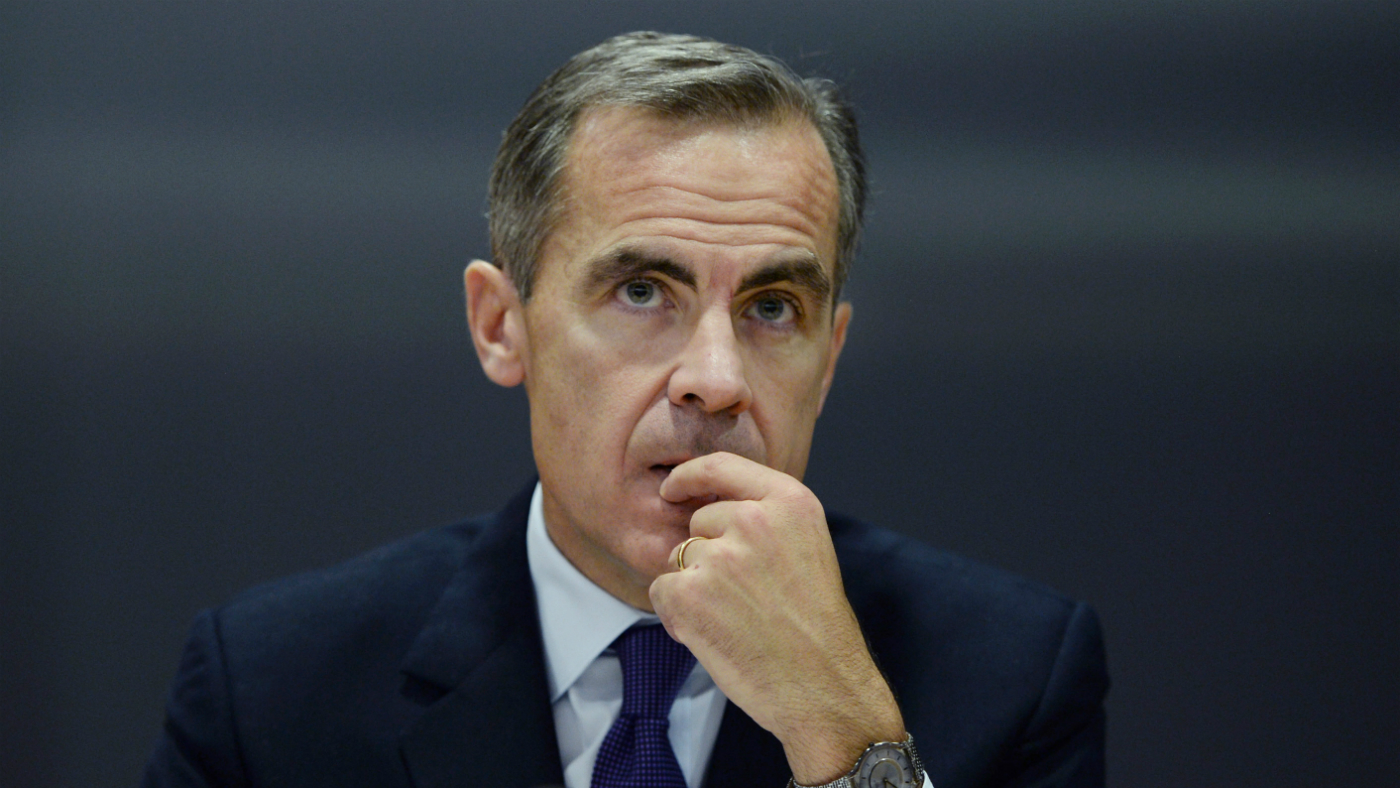
Interest rates: borrowing costs will not change – for now
1 December
Buyers of second homes, those taking out personal loans and investors in high street bank shares that rely on the regular dividend income stream can all breath a sigh of relief this morning.
The Bank of England revealed the results of its latest annual 'stress tests', which assess the resilience of the largest lenders in the UK to a major financial shock, alongside the bi-annual review of its Financial Policy Committee of threats to the financial system more widely.
The Week
Escape your echo chamber. Get the facts behind the news, plus analysis from multiple perspectives.

Sign up for The Week's Free Newsletters
From our morning news briefing to a weekly Good News Newsletter, get the best of The Week delivered directly to your inbox.
From our morning news briefing to a weekly Good News Newsletter, get the best of The Week delivered directly to your inbox.
It had been expected that it would ask the six banks (Barclays, HSBC, Lloyds, Royal Bank of Scotland, Standard Chartered and Santander UK) and building society Nationwide to hold a 'countercyclical buffer' of 0.5 per cent, says Reuters.
This is an extra sum of reserves that lenders are asked to put aside in benign economic times to protect against future troubles, which was introduced during the downturn but remains at zero.
There were also expectations it might ask for more money to be specifically set aside against certain types of lending, for example mortgages to private landlords and personal loans, which have been growing rapidly in recent months.
But while the Bank passed all of the lenders in the stress tests and said the banking system is now out of the immediate post-crisis phase during which risks were heightened, it decided to delay taking action this time around.
A free daily email with the biggest news stories of the day – and the best features from TheWeek.com
It put banks on notice, however, that it is likely to require a countercyclical buffer of one per cent to be held - and could begin to up the rate from March next year.
The Guardian says this will mean as much as £10bn extra will need to be set aside. "Some banks may need to raise fresh capital, others may be able to re-jig their finances to meet any extra requirements," the paper adds.
The effects could include higher interest rates on loans to customers to cover the higher capital expense, or a reduction in dividend payouts.
Barclays had been thought to be in the firing line due to the size of its investment bank - and its shares surged four per cent this morning.
RBS shares jumped more than three per cent, despite the bank being singled out as one of the weaker institutions in the tests, while Lloyds has risen 2.5 per cent.
Interest rates: why borrowing costs might increase anyway
30 November
Interest rates will not be raised in the UK before the end of the year – and even the most optimistic of rates hawks expects to wait a few months before Bank of England 'lift off'. Some predict it could be another year before the base rate is increased.
But that does not mean your borrowing costs will not rise in the near future. In fact, policymakers could take a decision tomorrow that will increase the rates charged on mortgages for second homes or other loans, as they react to a perceived personal credit 'bubble'.
Last week, Bank of England governor Mark Carney and his chief economist Andy Haldane warned about the growth in personal loans in recent months as ultra-low interest rates have persisted.
They have also previously voiced concerns over a boom in buy-to-let lending that is driving up property prices, but which could unravel fast when interest rates begin to rise.
To combat this, the regulator within the Bank which has powers to intervene to protect the financial system, the Financial Policy Committee, could take action.
In particular, says the Sunday Times, when it reports back on the second of its two annual meetings tomorrow it could reveal a decision to increase the capital reserves banks need to hold against certain loans, which would drive up costs.
The paper says the Bank is eyeing an increase in the 'countercyclical buffer' that is part of banks' capital reserves requirement but currently set at zero.
If it is increased, lenders will need to hold more money in reserve against the loans they issue, which effectively increases the cost and would lead to an increase in rates charged.
The buffer applies across all loans, but the FPC can specify that capital is held only against lending in particular areas including residential and commercial mortgages, The Guardian notes.
Some analysts suggest the watchdog is likely to focus on personal credit and leave loans to private landlords alone this time as it awaits to see the market impact of the tax increase for buy-to-let property purchases announced in the Autumn Statement last week.
The Daily Telegraph says lenders are lobbying against further action on the sector, which they say is growing as a result of structural changes in the housing market and does not represent an unsustainable bubble.
Interest rates: how does weaker UK growth affect ‘lift-off’?
27 November
Despite the positive mood, it has been confirmed that the UK economy grew at a slightly slower pace in the three months to the end of September.
City AM reports that gross domestic product grew 0.5 per cent over the three months, down from 0.7 per cent in the second quarter, according to the second official estimate from the Office for National Statistics (ONS).
The results confirm some analyst expectations and endorse the first estimate, but some of the additional detail that comes in the latest updated account point to concern in some areas.
FastFT notes that net trade – the difference between what the UK sells abroad compared to what it buys in – has provided the biggest setback to growth on record of 1.5 per cent. This disappointing result came after a positive contribution in the second quarter.
Does all this affect the chances of a rates rise in the near future? Not really, it would appear.
The ONS says that net trade was the only major indicator in the red in the third quarter, with the combined growth rate still at a good pace relative to other G7 countries and also keeping pace with the rejuvenated US.
Growth in industrial production sectors in the UK was revised down by 0.1 per cent to 0.2 per cent, with construction as previously noted declining 2.2 per cent. But services have expanded at an impressive 0.7 per cent and household consumption is also strong.
"Despite the softer expansion in the third quarter, we remain relatively upbeat over UK growth prospects," said Howard Archer, chief economist at IHS. "We expect the fundamentals to continue to be largely positive for consumer spending, enabling it to be a key growth driver."
Interest rates: should you prepare for higher borrowing costs?
25 November
Interest rates are unlikely to rise until well into next year and will remain relatively low for the foreseeable future, but that doesn't mean that the amount you pay to borrow money will not rise.
Several Bank of England officials gave evidence to MPs on the influential Treasury Select Committee yesterday. The bank's governor, Mark Carney, explained during the session that "even with limited and gradual rate increases it still will be a relatively low interest rate environment", the BBC notes.
Carney "remained vague on when a rate rise might be coming" (current speculation suggests the first half of 2016), but said that hints from colleagues that a further rates cut may be on the cards were likely to be wide of the mark. The direction of travel is up, he said, and it is merely a question of when. He was also clear that 'lift-off' would not mean an immediate return to a high interest rate environment that puts pressure on indebted households.
But Carney also expressed real concern about how indebted British households have become, in part because of ultra-low interest rates. The bank's chief economist, Andy Haldane, echoed this sentiment, adding that personal loans, in particular, are "picking up at a rate of knots", The Times reports.
Concerns were also raised about buy-to-let mortgage lending. "Lending to landlords rose by almost 10 per cent in September and is now nearly 40 per cent higher than a year ago," the paper says. "It has accounted for one in five home loans in the past year." Should landlords seek to offload property – if and when property prices begin to turn – there are fears the downward pressure could cause a serious crash.
Carney and Haldane both pointed out that the Financial Policy Committee (the regulator within the Bank of England that has powers over the banking sector to prevent instability in the financial system) could act soon. This might see it intervene to make it more expensive for banks to issue certain types of loan, which would in turn increase the cost to consumers.
The bank's governor told MPs he was "limited as to how much he could say about the FPC" as he was in "purdah" ahead of its next meeting, notes The Guardian. But he "confirmed the rapid pace of credit growth was something it might need to look at".
Interest rates: five things we learnt from the Fed's latest minutes
19 November
Since the Federal Reserve's last policy meeting in late October – and the latest strong US jobs figures – the market has been betting on an interest rate rise taking place next month.
Yesterday the minutes of the October meeting were released. Did they add to the case for the first rise in nearly a decade, or did they dampen enthusiasm?
1. Judging by the report, there are definite hints of a potential 'lift off' in December.
The Daily Telegraph notes that "most" of the central bank's policymakers believed the conditions to tighten policy "could well be met" by the time of its next meeting on 15 December. Policymakers also generally said they wanted to "convey the sense" that they believed it may be "appropriate" to raise rates next month.
2. The major shift – compared to a surprisingly dovish September meeting – suggests there's a belief that the risks to the US economy from external factors has receded.
Fears in particular that the Chinese economy will have a hard landing, with knock-on effects on manufacturers and exporters around the world, have mostly abated. "The US financial system appears to have weathered the turbulence in global financial markets without any sign of systemic stress," the minutes state.
3. Back at home, the policymakers believe there are signs that "private domestic demand" will "support economic growth going forward", notes FastFT, while a buoyant jobs market is making the case for a rise more compelling.
It's worth remembering that this meeting came before the October jobs report was published earlier this month, which showed that 271,000 jobs were created in October in the US and that wage rises had accelerated. The Fed has made the labour market a key determinant in its decision to increase rates and these numbers are a strong positive signal in that direction.
4. There is always a 'but' in Fed reports, however, and this time it comes in the form of inflation.
While there was more confidence that the energy price and strong dollar holding back consumer prices "would prove temporary", the report also contains a statement that inflation would need to be seen to be moving back towards the two per cent target for a rates rise to be a viable proposition. Inflation rose to 0.2 per cent in October, but there's a big question mark over whether this will prove to be high enough to tick that box on the Fed's check list.
5. Divisions also remain, despite the overall shift.
CNBC says that the committee is "more divided… than it's been since Janet Yellen chaired her first meeting in March 2014". Certainly more committee members are now considering voting for a rates rise, but others remain stubbornly dovish while a couple of members are even discussing what further stimulus could be provided if the economy starts to flag again.
So will the Fed vote for a rates rise in December?
That's the million dollar question – and some Fed committee members would rather it wasn't. As recorded in the minutes, there is a growing feeling that the "path of policy, rather than the timing of the initial increase, [is] the more important influence on financial conditions". Basically, members want to get this first rise – and the market's obsession with it – out of the way.
There is also a general sense that the economy can handle an increase. The jobs market could hardly be in better shape, domestic demand is relatively strong and companies appear to be weathering headwinds well. Economists at BNP Paribas say the minutes are "crystal clear" that "without an unanticipated shock... the Fed will raise rates in December".
But CNBC points to the "wiggle room" that the committee has left itself – and some members will not be swayed from their dovish stance. While an increase is more likely than not, don't rule out the committee voting to keep rates as they are – but be prepared for an adverse market reaction if it does.
-
 Alaa Abd el-Fattah: should Egyptian dissident be stripped of UK citizenship?
Alaa Abd el-Fattah: should Egyptian dissident be stripped of UK citizenship?Today's Big Question Resurfaced social media posts appear to show the democracy activist calling for the killing of Zionists and police
-
 Biggest political break-ups and make-ups of 2025
Biggest political break-ups and make-ups of 2025The Explainer From Trump and Musk to the UK and the EU, Christmas wouldn’t be Christmas without a round-up of the year’s relationship drama
-
 Why 2025 was a pivotal year for AI
Why 2025 was a pivotal year for AITalking Point The ‘hype’ and ‘hopes’ around artificial intelligence are ‘like nothing the world has seen before’
-
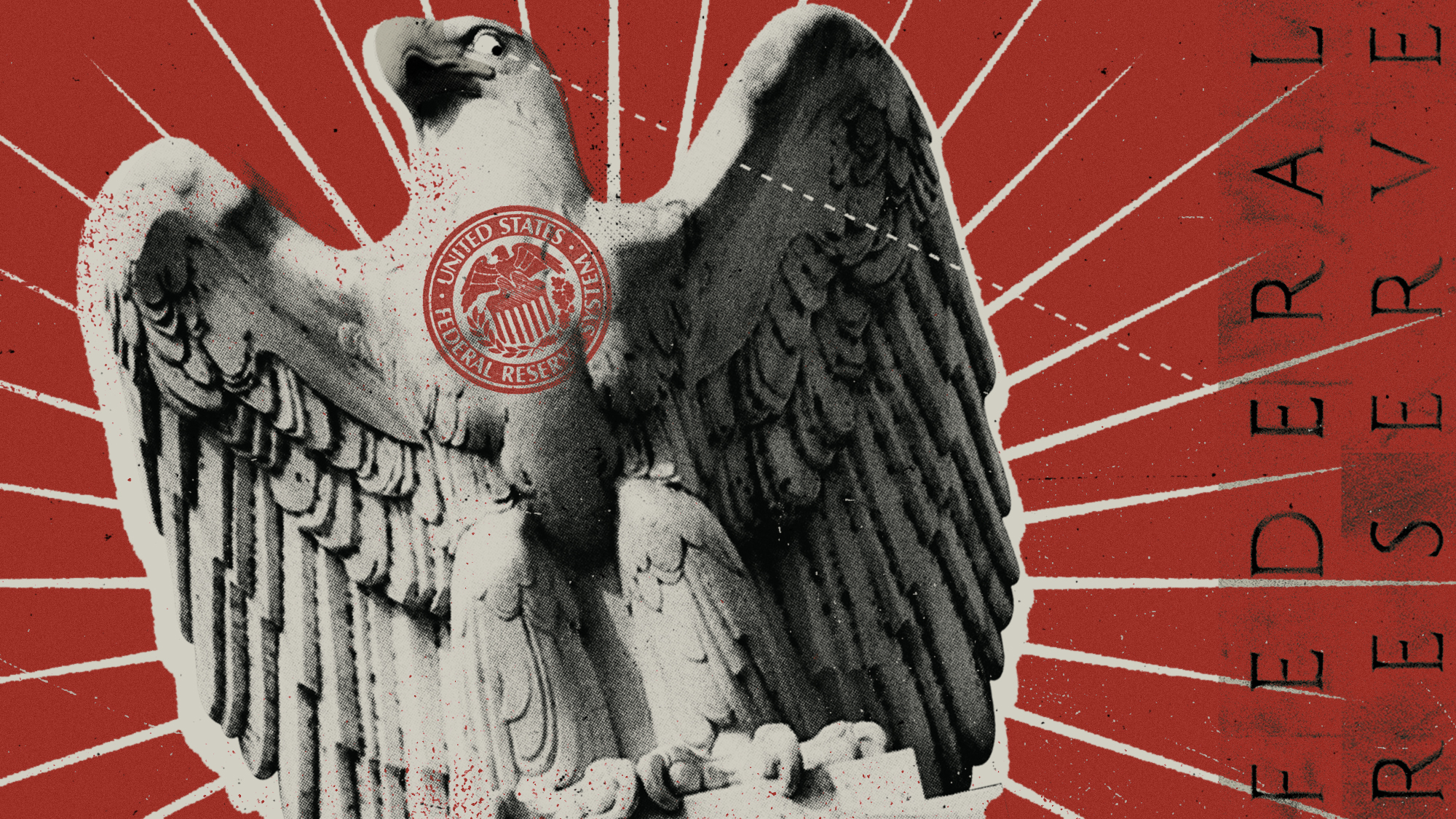 Who will be the next Fed chair?
Who will be the next Fed chair?Today's Big Question Kevin Hassett appears to be Trump’s pick
-
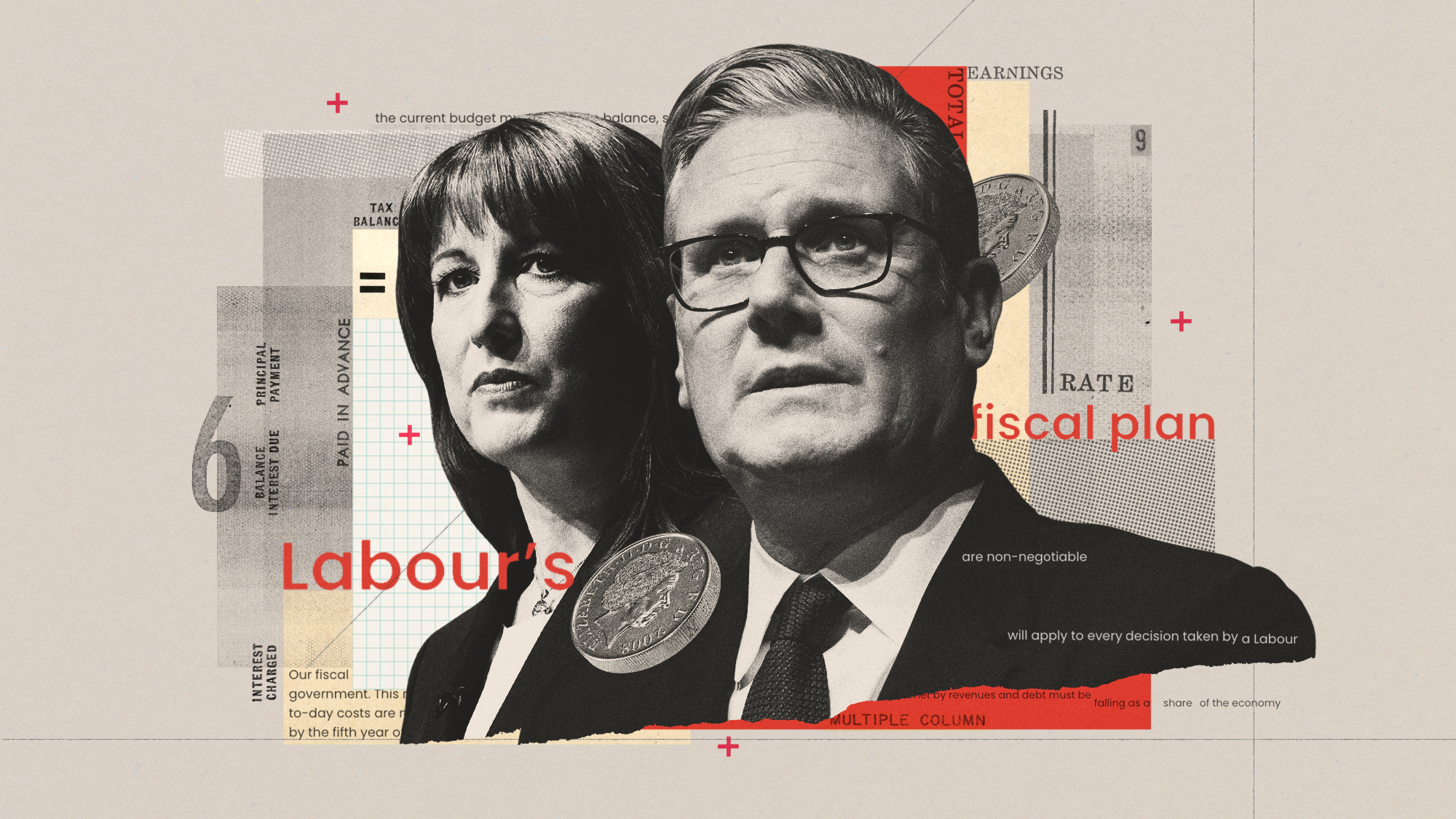 Should Labour break manifesto pledge and raise taxes?
Should Labour break manifesto pledge and raise taxes?Today's Big Question There are ‘powerful’ fiscal arguments for an income tax rise but it could mean ‘game over’ for the government
-
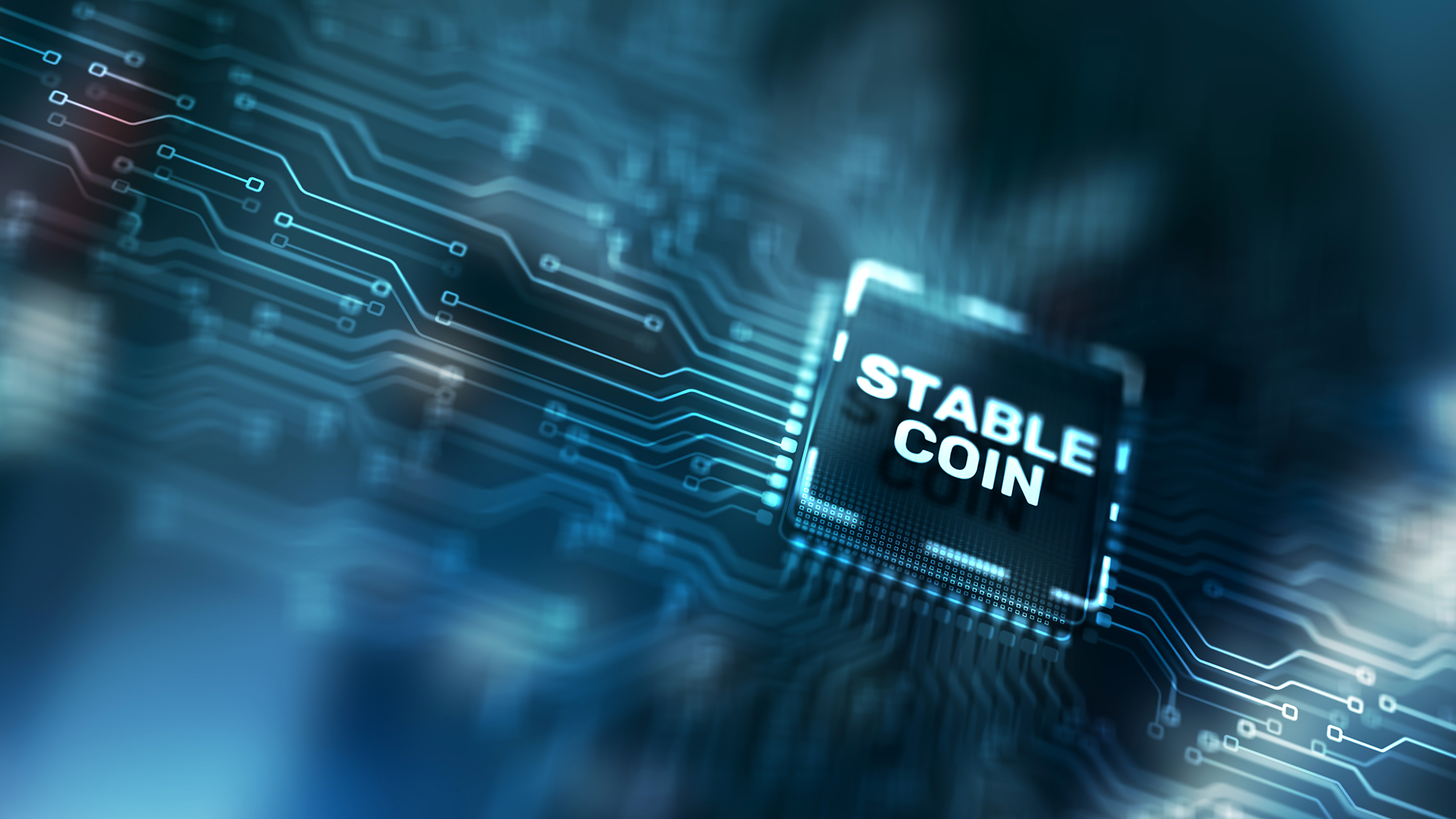 What are stablecoins, and why is the government so interested in them?
What are stablecoins, and why is the government so interested in them?The Explainer With the government backing calls for the regulation of certain cryptocurrencies, are stablecoins the future?
-
 Fed cuts interest rates a quarter point
Fed cuts interest rates a quarter pointSpeed Read ‘The cut suggests a broader shift toward concern about cracks forming in the job market’
-
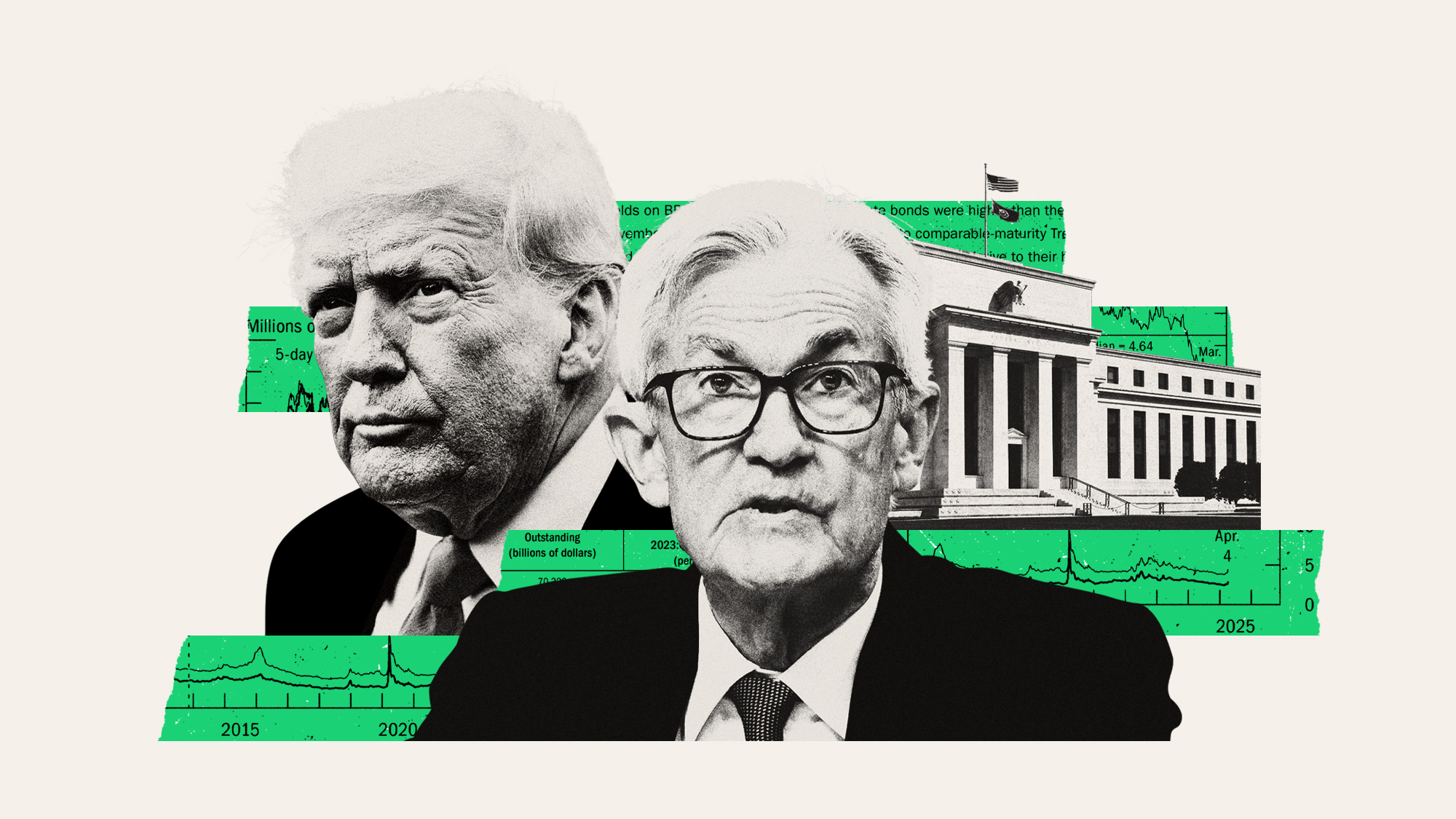 Trump's threats to fire Jerome Powell are unsettling the markets
Trump's threats to fire Jerome Powell are unsettling the marketsTalking Points Expect a 'period of volatility' if he follows through
-
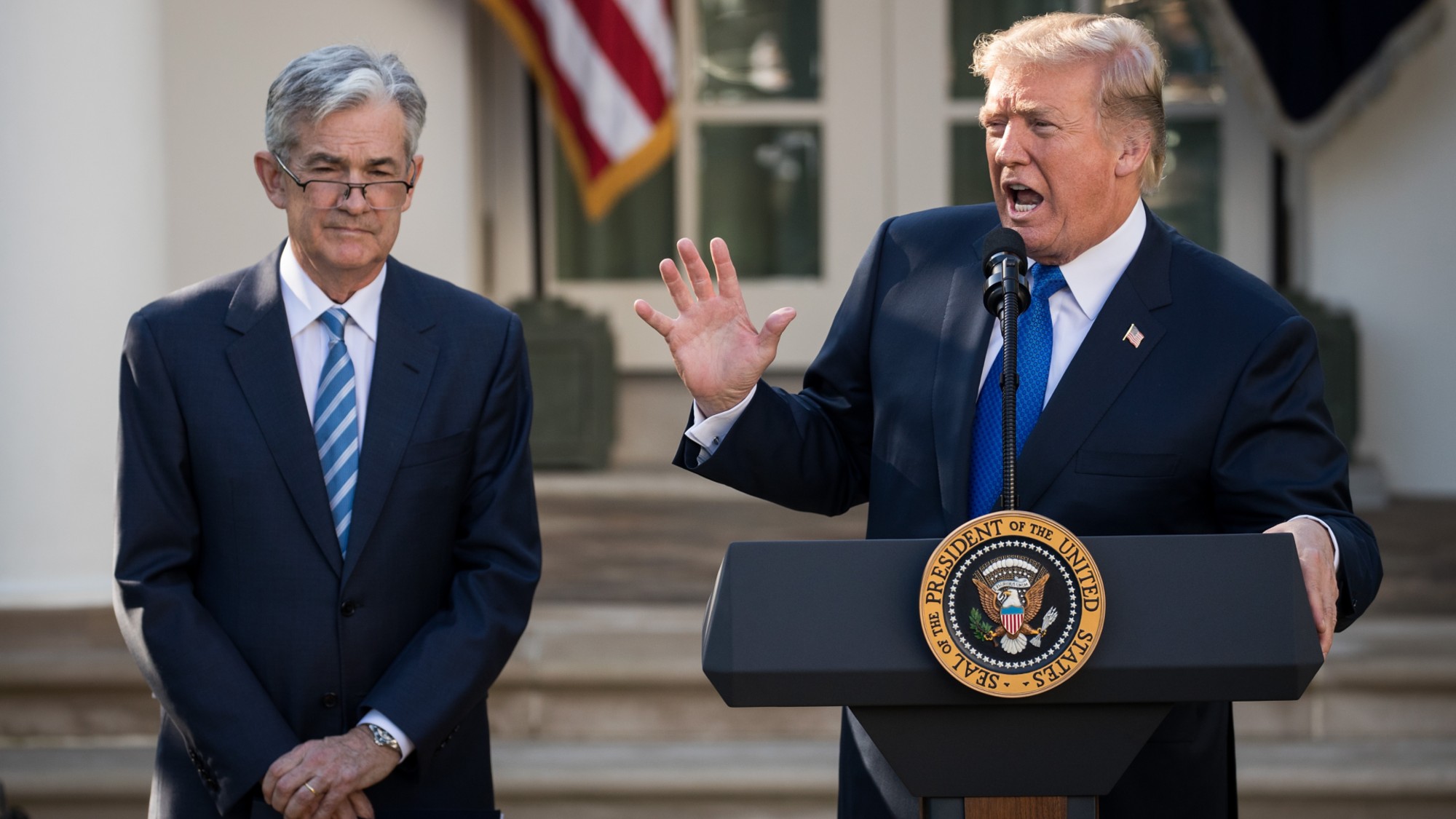 How will Wall Street react to the Trump-Powell showdown?
How will Wall Street react to the Trump-Powell showdown?Today's Big Question 'Market turmoil' seems likely
-
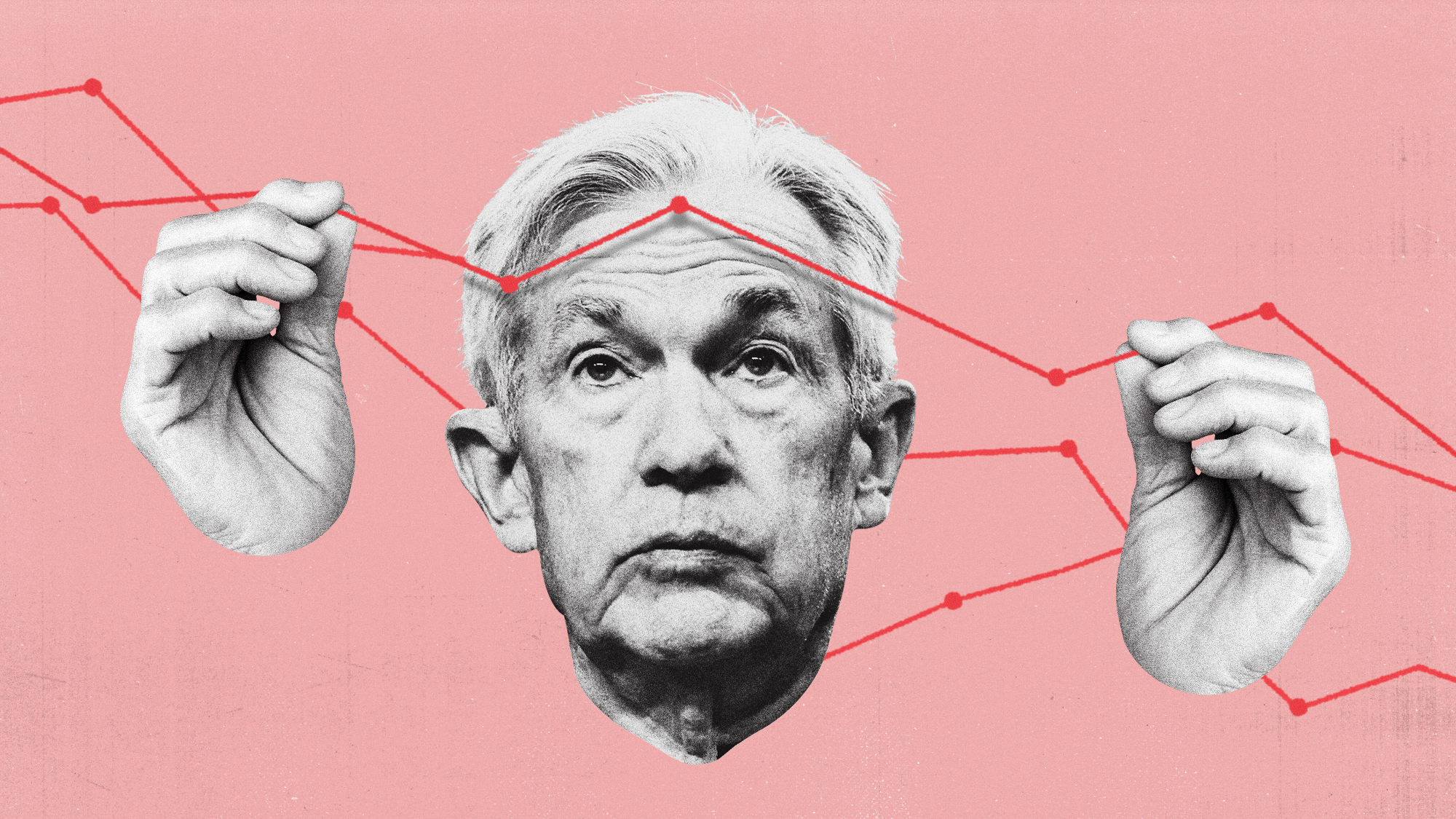 How will the Fed manage Trump's economy?
How will the Fed manage Trump's economy?Today's Big Question Jerome Powell is 'in a bind'
-
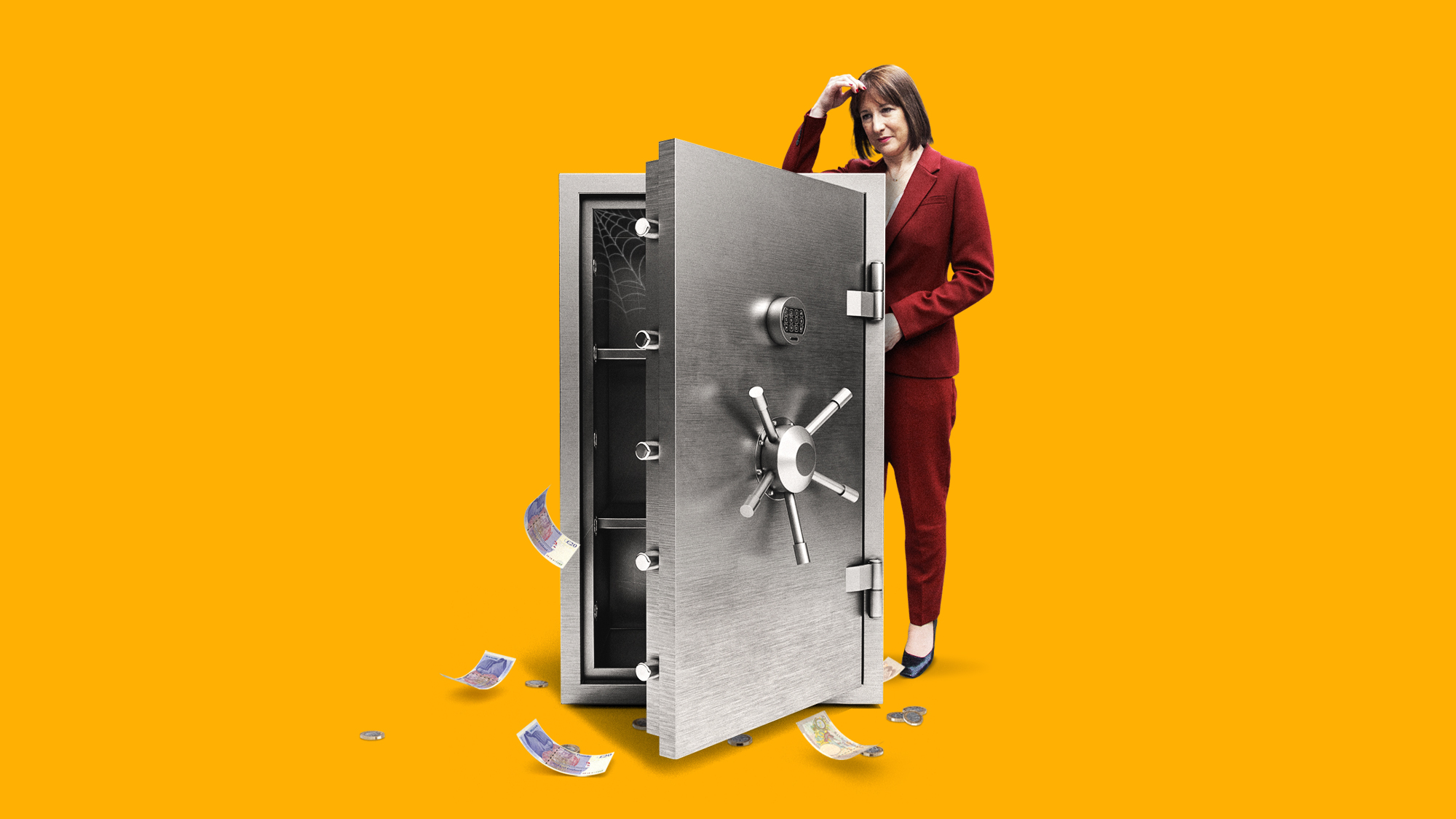 Will Rachel Reeves have to raise taxes again?
Will Rachel Reeves have to raise taxes again?Today's Big Question Rising gilt yields and higher debt interest sound warning that Chancellor may miss her Budget borrowing targets